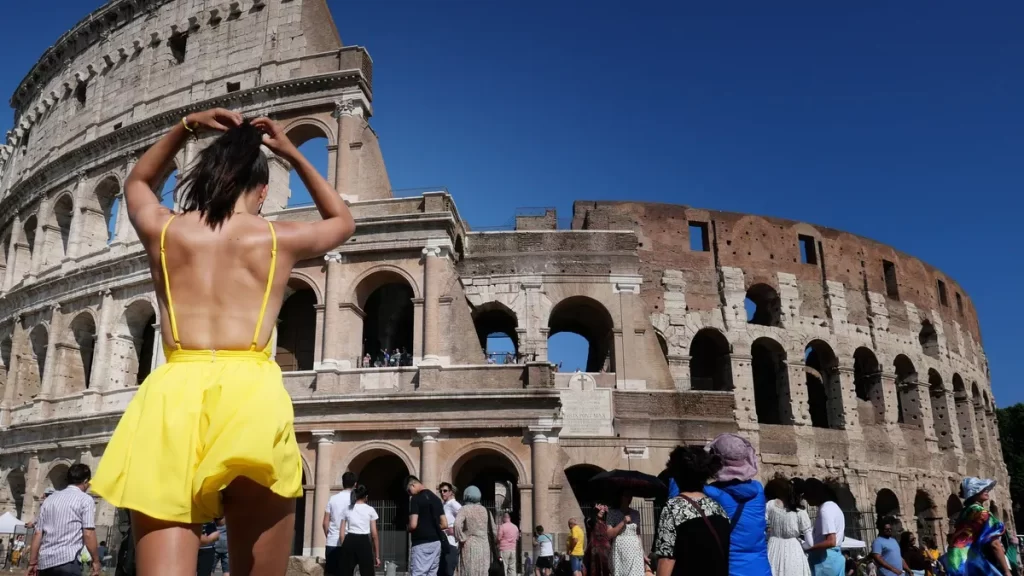New Italy Tourism Restrictions
American bookings to visit Italy were up 50% compared to last year’s Easter holiday, according to the Italian National Tourist Board (ENIT). With numbers skyrocketing, the country predicts 2023 will overtake Italy’s 2019 pre-pandemic tourism numbers.
As such, destinations across the country are implementing restrictions to counterbalance the impact of over-tourism and secure Italy’s cultural, artistic, and environmental integrity for generations to come.
Several Italian Destinations Recalibrate for Tourism
First Florence imposed seasonal ticket prices that fluctuate with peak tourism times – like at the Uffizi Gallery.
Now three other destinations in Italy – Portofino, Trentino-Alto Adige, and Venice – are enforcing new rules and regulations to prioritize quality over quantity.
Further changes are imminent. ENIT Tourism Minister Daniela Santanche has called for new policies to adjust to over-tourism on the Tourism Board website.
“Italy is confirmed as one of the favorite European destinations for the Easter holidays, we are second only to Spain. Love for our nation is no longer just local, data tell us that over 35,000 bookings come from the United States, one of the most important targets for Italian tourism in terms of spending.
“This proves that we are working well but that we must and can do even more because the real challenge is to adjust seasonally in order to have tourism all year round. And this is what we will be working on in the coming months.”

Portofino Fines Tourists
Imagine a small Genoan fishing village of 500 people that grows to thousands nearly overnight. Such is Portofino during peak tourism times, whether tourists arrive by car or cruise ship. Travelers worldwide seek the photo opportunity of unmatched views of the jewel-tone harbor, with color-blocked houses lined up on the waterfront. But as a result, the city suffers significant congestion and traffic problems.
The Italian Riviera hotspot is fining tourists for lingering or gathering between certain hours of the day in hopes of regulating the flow of pedestrian and vehicular traffic for safety reasons.
Visitors in the city’s “red zones” or “yellow zones” may stroll along the waterfront but are subject to fines between €68 and €275 if they stop for any reason during the restricted daytime hours from now until October 15, 2023.
The mayor of Portofino, Matteo Viacava, says the rule is simple: Keep moving or pay a penalty.
The first red zone is between Piazza Martiri Olivetta and the Umberto I Pier between 10:30 am and 6:00 pm. The second red zone is in the Molo Umberto I waterfront area between 7:30 am and 6:00 pm.
Trentino-Alto Adige Caps Visitors
With the perfect mix of picturesque architecture and dreamy snow-capped mountains, the Trentino-Alto Adige region is overwhelmed with tourists. The area bordering Switzerland and Austria reached 34 million overnight stays last year.
Travelers flock to see medieval castles, the Dolomites, and charming villages. Still, they are unhappy when they cannot find available hotels, parking, or restaurants. And residents are unhappy too. Overtourism has forced this famous northern Italy area to be more stringent with its regulations. So visiting the autonomous region of Trentino-Alto Adige just got a little more exclusive.
Tourism limitations mean two things for the area. Firstly, there is a cap of 230,000 officially registered and approved guest beds, and new traveler accommodations are allowed to open only with permission from local authorities. Secondly, reservation systems are in place for day-trippers to avoid overcrowding in popular locales, like alpine lake Lago di Braies and alpine meadow Alpe di Siusi.
CEO and Founder of Travel Italian Style, Cassandra Lena Santoro, is dedicated to helping clients see Italy like a local, but with the comforts of a traveler. She agrees with the regulations the area has recently put into place.
“As the owner of a travel company, I will always recommend visiting the beautiful mountainous regions of Italy. In some ways, I am grateful that social media has helped shine a light on this location. Yet, as half Italian and as someone who spends most of my year in Italy, I couldn’t agree more with Trentino-Alto Adige’s decision.
“A colleague once told me that ‘tourism is life’ – I love Italians’ passion for everything, including their jobs. However, what kind of life is it for locals whose land is destroyed or too expensive for them to enjoy? For these places to be properly appreciated by tourists and lived in by the natives, there must be regulations. I hope many other regions follow this example. Italy’s soul and historical gems can and will eventually be lost if we don’t protect the country while traveling.
“Trentino-Alto Adige region’s measures ensure a better quality of life for residents and tourists.”
Venice Requires Reservations and Implements an Airport Surcharge
Overtourism has plagued Venice for years. Its effects range from crowded passageways to tourists who swim in the canals of Venice, where swimming is prohibited. In some cases, the acts ruin the pleasure of others trying to enjoy the city peacefully. Other cases are more serious, like stolen gondolas or graffiti on Redentore church.
Venice’s ban on mega-ships caused some cruise lines to reroute ships to nearby Trieste.
Despite that, Venice continues to deal with overtourism. So last year, the city announced it would start a reservation system. Overnight visitors – who are already paying a hotel tax – must register. At the same time, day-trippers need to register and pay a fee.
It also announced that travelers departing the Marco Polo Airport near Venice must pay a small surcharge. While the city postponed tourism reservations and taxes for 2023 with no date announced for next year, the airport surcharge will begin in April 2024.
The Harm of Tourism
How does Italy allow visitors to freely enjoy their country and its treasures while dealing with unpredictable bad apples that put those treasures at risk?
Consider Michelangelo’s Pietà, a famous piece of art in Rome, which was placed behind bulletproof glass after a Hungarian tourist attacked it with a hammer in the 1970s. Or the Spanish Steps, which suffered $25,000 worth of damage after two American tourists disrespectfully rode, then threw, scooters down the stairs.
The country must put restrictions in place so that Italy – a unique destination where art, history, and culture have co-existed for centuries – remains a place that tourists can visit for countless lifetimes to come.




